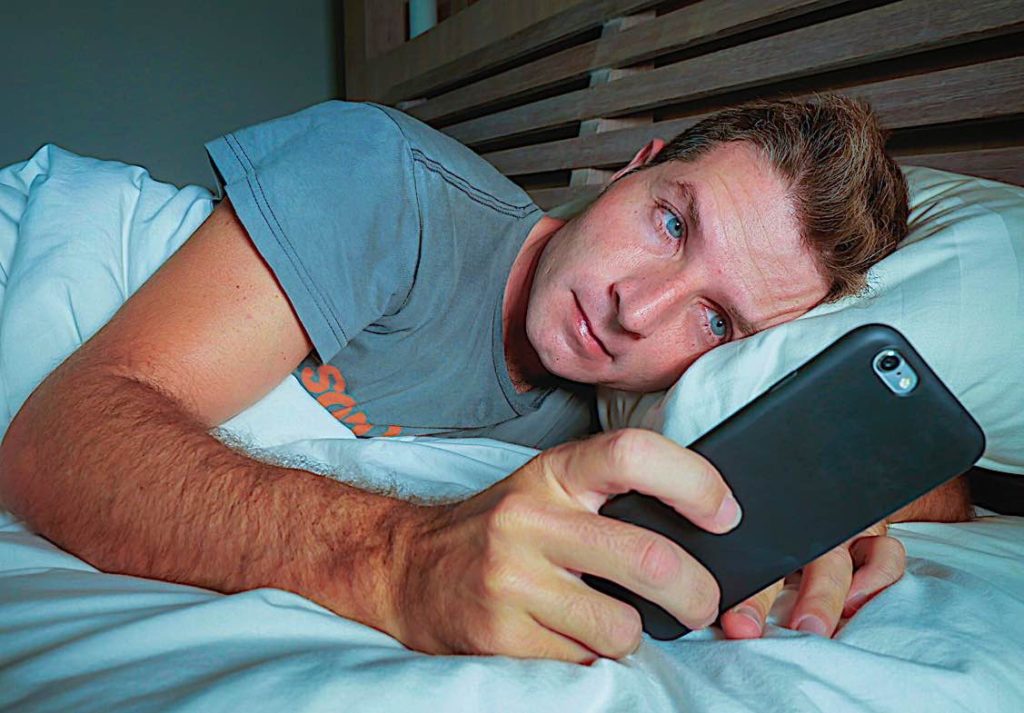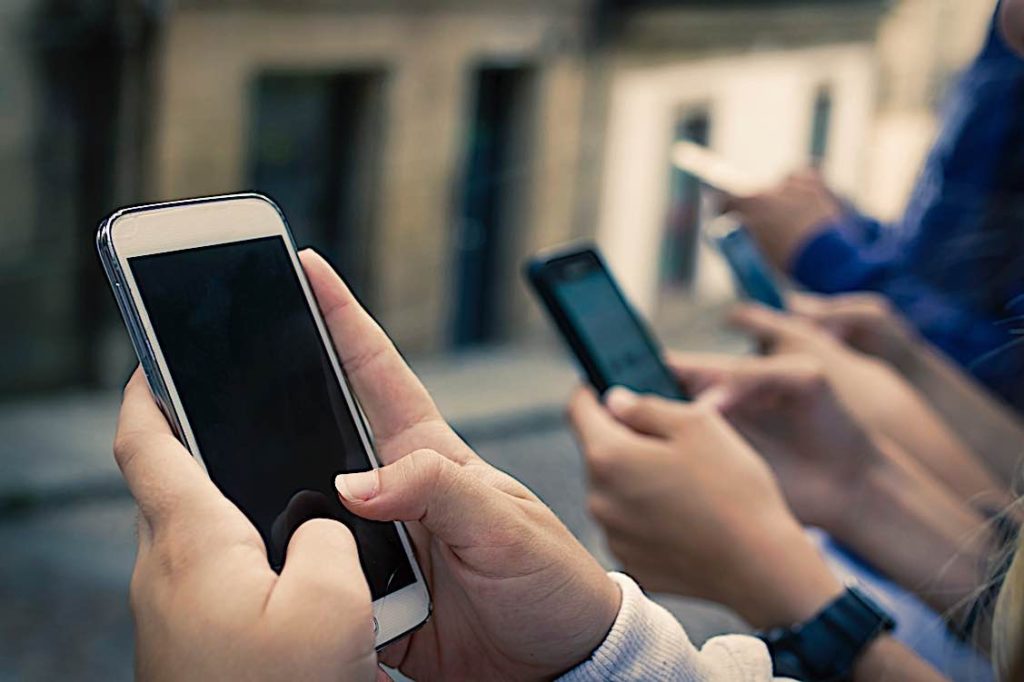
Seven Digital Detox methods that can increase office productivity; human office workers now have an average attention span of 8 seconds, less than a goldfish
Since the advent of smart phones, the human attention span in the workplace has dropped to eight seconds — now shorter than that of a goldfish (at nine seconds) — according to a Microsoft Corp study of 2,000 participants.
The main cause of the drop in attention — and resulting productivity — is internet and digital addiction. Critical thinking and analysis skills are declining right along with attention span. This is why savvy HR managers probe a candidate’s digital screen time and habits as part of hiring due diligence.
Other stats, indicate that going “offline” increases productivity by 15%.[1]
Consider these facts [1]:
-
The average adult spends 8 hours 41 minutes on our screens.
-
We average 2.15 hours per day on social media.
-
Currently, we average one 25 hours out of every week in screen time — up from only 9 hours in 2005.
-
We check our smart phone every 12 minutes (and we virtually all have smart phones).
-
We click on our devices (various) 2,617 times on average per day.
-
In the last 10 minutes alone, 34% of people checked Facebook.
-
40% of us will check our phone for messages and texts within five minutes of waking up.
-
Digital addiction has led to a newly designated psychological “phobia” — nomophobia — or the obsessive fear of being without our smart phones. (The first sign of this is that you might delay a meeting to go back and look for your missing smart phone.)
-
62% of us hate how much time we spend online — but we do it anyway.
-
A recent study showed that simply seeing the Facebook logo triggered addiction cravings.
-
Hospitals are now admitting patients for digital addiction in London, UK.
It impacts productivity and morale
For obvious reasons, this addiction, which most of us share, impacts both productivity and happiness in the work place. Addiction, after all, is a mental health issue. Social skills and personal meetings are also declining, further degrading corporate productivity. Increasingly, treatment for addictions or psychological disorders stemming from the addictions, are resulting in time off work. Depression, which is a known side-effect of Digital Addiction, hurts morale.
Productivity hits:
-
Human attention spans are now shorter than that of a goldfish: 9 seconds for a gold fish, eight seconds for the average human, according to a Microsoft Corp. study [2]
-
Studies indicate that increased screen time reduces “down-time” and is resulting in declining ability to focus.
-
Increasing depression, linked to internet addiction, is reducing productivity and social engagement in work places (Science Direct [3])
-
Academic performance is increasing
proportionate
to increased time on social media, according to a Longitudinal Cohort Study [4]

Brain Damage?
Quality of work, and happiness in the workplace are definitely impacted by brain health.
Neuroimaging research from UCLA has shown, however, that excessive screen time causes brain damage, including structural and functional changes, particularly relating to decision-making, cognitive control, and emotional processes. [5]
Of course, lack of sleep, caused by screen addiction, also results in neural impairment, similar to other addictions such as alcoholism. [6] There are also known health issues related to “digital eye strain” and blue light, along with excessive seat time and other spin-offs of digital addiction.
Seven Ways to Digitally Detox Your Workplace
Even though technology is meant to be an aid to productivity, too much screen time clearly has negative impacts on the bottom line. While a total Digital disconnect is not possible, what can we do about Digital Addiction in the workplace — without appearing to be Big Brother in our policies?
Some companies have a “Digital Detox” committee. Smaller companies simply put policies in place that give employees some relief from digital over-exposure. It is well worth the effort to either implement formal policies, combined with training and reinforcement, or — the the least — subtle encouragement to change bad screen habits.
Let’s start with the most controversial method.

Banning the smart phone? Forget about it
Clearly, this is largely a non-starter for most workplaces. Cold turkey breaks from digital fixes rarely works, and it is bad for morale to become petty about the time people spend online, on social media and on the phone. Most companies prefer to measure productivity to “personal screen time.” Having said that, the addiction does measurably reduce productivity long term.
Studies indicate that that we check our phone 200 times a day. Clearly a ban would increase productivity, but at the cost of morale. (And most people will make up for it by messaging on their computers to “get their digital fix.) Instead of an out-right ban, consider lighter policies, education and coaching. Of course, in safety situations, such as construction sites or around machinery, smart phones are usually banned as a safety matter.
Take the tech out of meetings
Yes, a laptop and projector and connected environment is slick and helpful at many meetings. Yet, many companies are introducing at least some “no-tech meetings.” This helps reinforce team member preparation. If you are not connected during the meeting, you will have to research prior to the meeting, leading to more productive use of group time. If you have an outdoor terrace or area, this can be an ideal way to “destress” a meeting and remove the tech.
Statistics indicate that brainstorming sessions are improved in front of a plain vanilla white board, versus a digitally enabled version. The freedom to scrawl is creative.
The 52-17 formula
On average, we can handle 52 minutes of constructive, concentrated work. We then require an average of 17 minutes break from that work — according to a study from Hiroshima University. In Japan, where they work much longer hours per week than is typical in the West, this is the golden rule. Next time you think about complaining about excessive break time, remember the 52-17 rule. [7]
Contrary to advice found elsewhere, it is not recommended you use DeskTime — a productivity app — to manage this, as it increases digital dependence.
Tech-Free Hour
Try a company-wide policy of “one hour tech free” per day, during which, screen savers are turned on, phones are turned off, and pen, paper, chalk, chalkboard, marker, whiteboard are the only tools allowed. Turn it into a game, rather than an enforceable rule.
For teams, this can be the brainstorming session without computers. For individuals, this can be time with pen and paper (say, what? What is this thing you call pen and paper?)

Disconnect the office from home
Although not always possible, it is generally more productive to minimize the cloud connections, except for mission critical shared data. The cloud shared project manager and contact management system and file sharing depository can become distractions — and also feed dependence on digital. It also makes it more likely your team will connect from home to do work. While in the short term this sounds like a great idea for productivity, studies show that long term home work reduces creativity, innovation and productivity.
Disconnected Retreat time
Although it’s a cliche, teams can benefit from retreat off site. This doesn’t mean ruining someone’s weekend. It means committing to a day or two offsite on a normal work day, with minimum connection. Time can be dedicated to either training, or brainstorming.
Set an example at leadership level
This is a truism in all things related to effective management, but nothing is more effective than demonstrating, through our own conduct and actions, how to “unhook” from time to time. Deliberately ignoring the “text ping”, for example, when speaking with a team member shows how valued they are. Not answering the phone during a business lunch gives a good impression. Studiously ignoring the pings and rings while working on a project, especially with a team, can set a strong example.
There are many other things you can do to create a less digitally-intense environment: offering recreational rooms with “activities” instead of smart-phone friendly seats; education and coaching are always important; set up a “digital detox buddy” system; and bringing in mindfulness breaks to the office.
Ultimately, it comes down to reducing connected time as much as possible to give the brain, eyes, and adrenal gland a break. The benefit will be increased innovation, creativity, productivity and morale.
Contact Pivotal
NOTES
[1] “The Facts on our Digital and Internet Addiction and the Need for Digital Detox”
[2] Humans now have shorter attention span than goldfish
[3] Negative mental health outcomes associated with Information and Communication
[4] Female college students media use and academic outcomes Longitudinal Cohort Study
[5] Is technology producing a decline in critical thinking and analysis?
[6] Digital detoxers ditch their devices
[7] A Formula for Perfect Productivity: Work for 52 Minutes, Break for 17.


 Our HR solutions experts can recommend the right mix of HR outsourced services to make your entry into Canada easier.
Our HR solutions experts can recommend the right mix of HR outsourced services to make your entry into Canada easier.  Pivotal Employment Management Services co-hires your workforce, simplifying entry of your business in Canada.
Pivotal Employment Management Services co-hires your workforce, simplifying entry of your business in Canada. 















